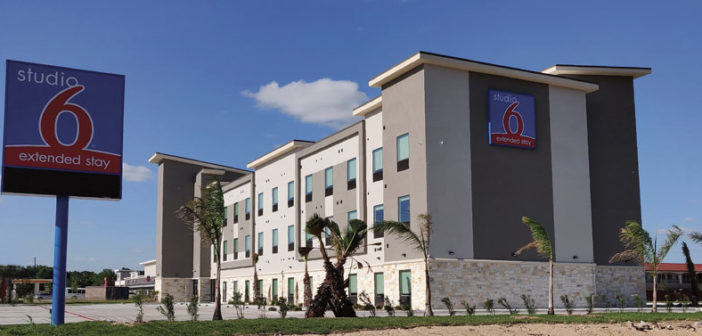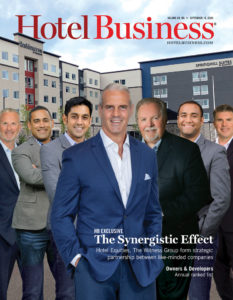NATIONAL REPORT—The COVID-19 pandemic hit the industry hard, devastating all segments with the loss of both corporate and leisure business as well as restrictions on travel. For the extended-stay segment, however, while numbers dropped considerably in the first few months of the pandemic, there was always a need for long-term housing, especially for essential workers.
“The extended-stay segment was the first segment to really have very good results, especially in the lower-tier extended-stay segment,” said JP Ford, SVP and director of global business development for Lodging Econometrics. “They [extended-stay hotels] were open and guests were flocking to them—of course, not with the same numbers that they were pre-pandemic, but they were a place to go and take that mini vacation or a place for those who were essential workers. They offer a safe place to stay for a longer period of time because of the built-in amenities.”
According to Ford, at the end of Q1 2020, 27% of the projects in the pipeline were extended-stay (1,545 projects), and 23% of the rooms in the pipeline were from extended-stay projects (161,846 rooms).
“By mid-March you already had two-and-a-half months baked into the first quarter when things began to shut down,” Ford said. “What happened after that is developers began to rethink projects and where they were with those and, in some cases, you had some construction stops in some states, downtown areas and cities.”
At the end of Q2 2020, there were 1,517 extended-stay projects in the pipeline and 159,016 extended-stay rooms in the pipeline.
“Developers were beginning to think of their projects—depending on what stage they were in—and most people took a ‘wait and see’ attitude. The number of projects and rooms in the pipeline at the end of Q1 are slightly above where they were Q4 of 2019. The conclusion to be drawn is that more extended-stay projects were added to the pipeline in Q1, and you had growth from Q4 to Q1 even though you were into the pandemic for 15 days,” Ford added.
According to Bruce Haase, president/CEO of Extended Stay America (ESA), ESA entered the pandemic with record occupancy levels through the months of January and February, and when the pandemic hit—and much like all the transient competitors—it lost just as much transient business.
“Certain segments of the extended-stay business that took a little bit longer to dissipate were the corporate accounts and discretionary business travel, which started to dry up as well. We realized pretty quickly that during periods of dislocation, emergency and economic uncertainty, there really are other facets of extended-stay demand that tend to materialize and we went after those segments hard,” Haase said.
As markets began to recover, however, Haase said, ESA has been getting some corporate and transient business back with the system running at about 80% occupancy, similar to ESA’s pre-pandemic numbers at this time last year.
“When there’s economic shocks to the system, that oftentimes creates shock in people’s lives and leads to some folks needing temporary housing,” Haase said. “Of course, rate is a little bit difficult, but our occupancy never dropped below the high 50s…It never made any economic sense to close the hotels.”
In fact, 17 of ESA’s top 50 markets in the month of July were year-over-year RevPAR positive.
“It’s a tale of markets,” Haase said. “We’re being creative about finding new sources of demand like student housing for smaller universities.”
For G6 Hospitality, although numbers took a hit earlier this year, they have and remain on the rise.
“Initially, everybody suffered in that first 30 days with mid-March as the starting point,” said Mike McGeehan, chief development officer of G6 Hospitality. “In the month of August, the Studio 6 network was running 64%. The low point was mid-April when Studio 6 was just under 40% but May picked up considerably. We’ve continued to leave the light on for travelers… We’ve seen the demand coming from essential travelers.”
According to McGeehan, having in-room conveniences like kitchens is a major selling point for extended-stay, with guests taking comfort in being able to stay in their rooms for meals.
McGeehan added, “We’ve benefited in our segment because unfortunately, air travel has dropped dramatically. People feel safer if they’re going to travel or see family to do it by car and stay overnight. At the same time, we have to be on high alert about what’s going on in the nation.”
Prior to the pandemic, many hoteliers were already singing the praises of the extended-stay segment. With the relative success of the segment during this difficult time, will there be an increased interest?
“We’ve gotten the attention of developers in the mid- and upper-select scales that have never really developed in the economy space but they’re noticing how well the economy brands are doing compared to midscale and upper-select,” McGeehan said. “Many are new-construction and some are conversions. We haven’t seen the increase in supply on the economy side, but specifically for extended-stay, that we’ve seen in the upper segment where supply has really grown in the last five years; supply in our area has been limited.”
Over the last few years, McGeehan said, G6’s base has been its existing franchisees with more than half of its agreements still signed by existing franchisees who see the value in its brands and who want to continue to build their portfolios. For ESA, they’re newer to the third-party franchising game, but they’re still seeing inquiries for conversions and new-builds.
Ford agreed, noting that extended-stay properties are always going to be attractive to developers and the traveling public, both on the corporate and leisure side.
“I think you may find some people who will gravitate toward extended-stay development as a result of how extended-stay performed during the pandemic, and they may even find additional developers willing to move and do extended-stay in the lower-tier category as well,” Ford said. “I expect that those who are in the extended-stay development field right now will continue. Will there be more attraction to it? I think that there will be. I don’t think it will be a ton more, but certainly some will look at the economics and the dynamics of extended-stay development and see that should this ever happen again, or should a crisis of this magnitude ever happen again, or should we be ‘locked down’ ever again, this is probably a pretty good hotel to own.” HB


